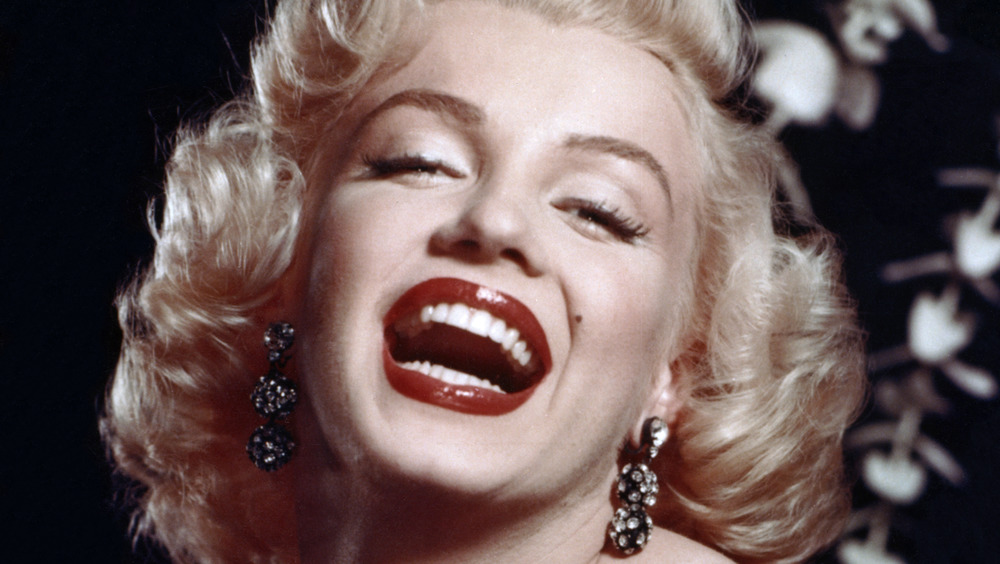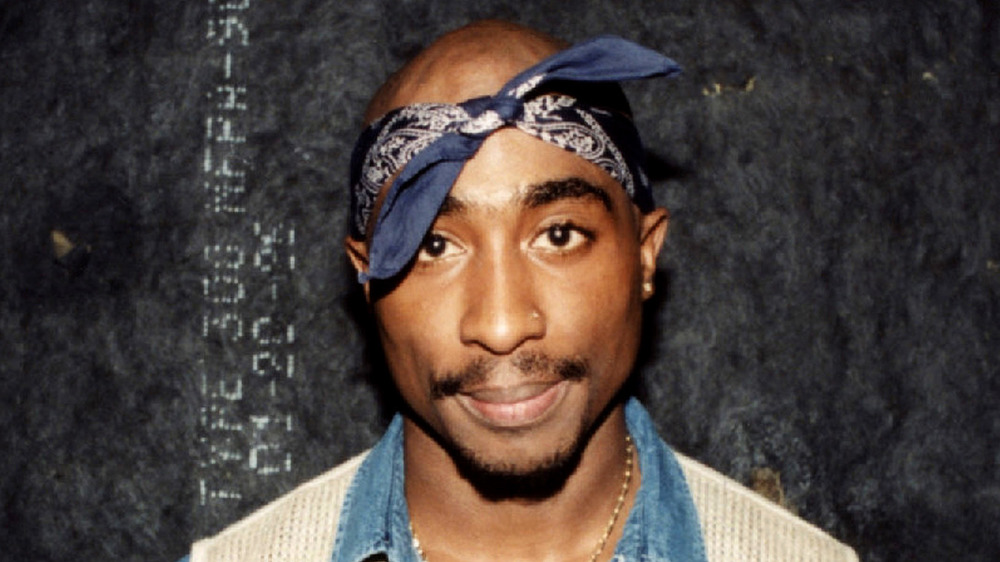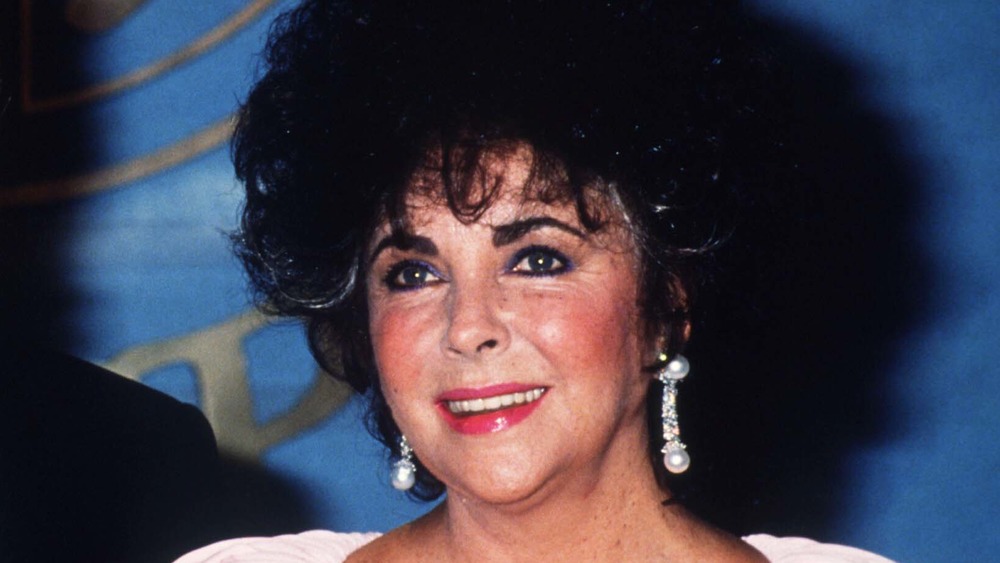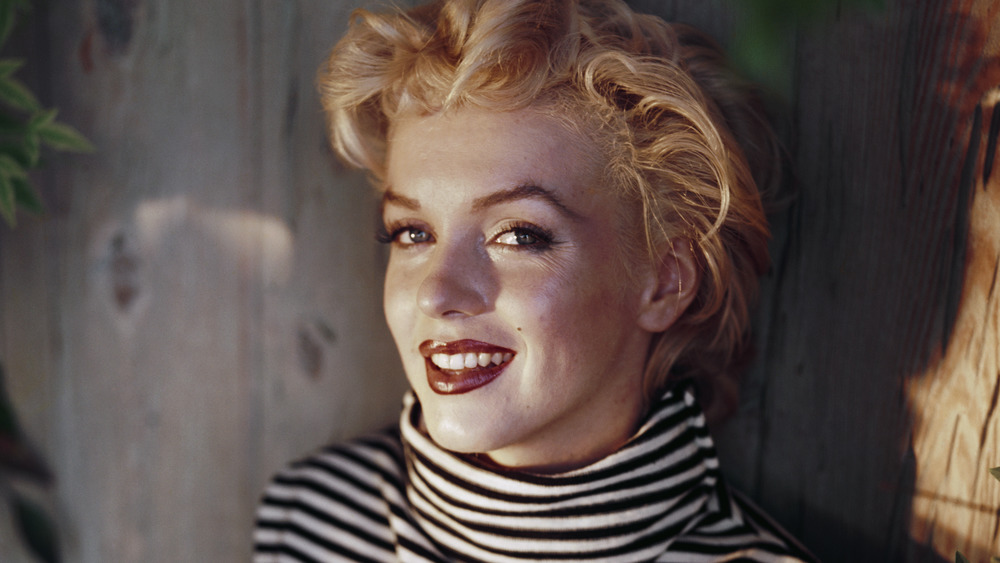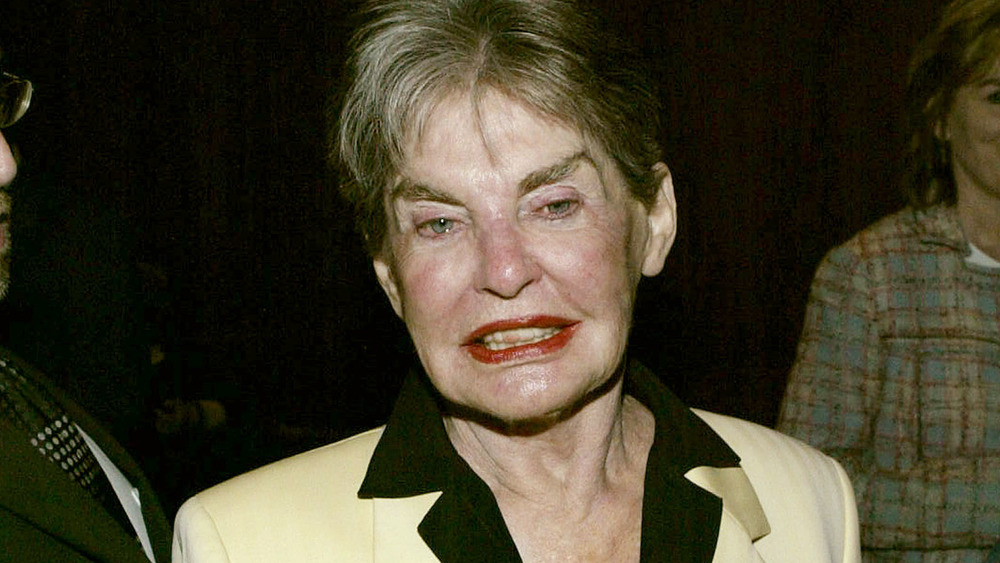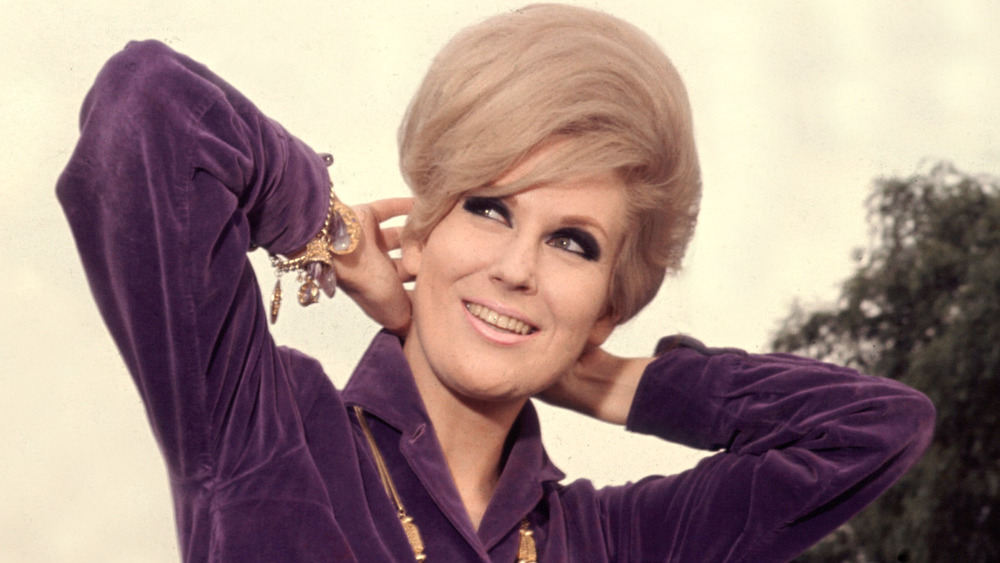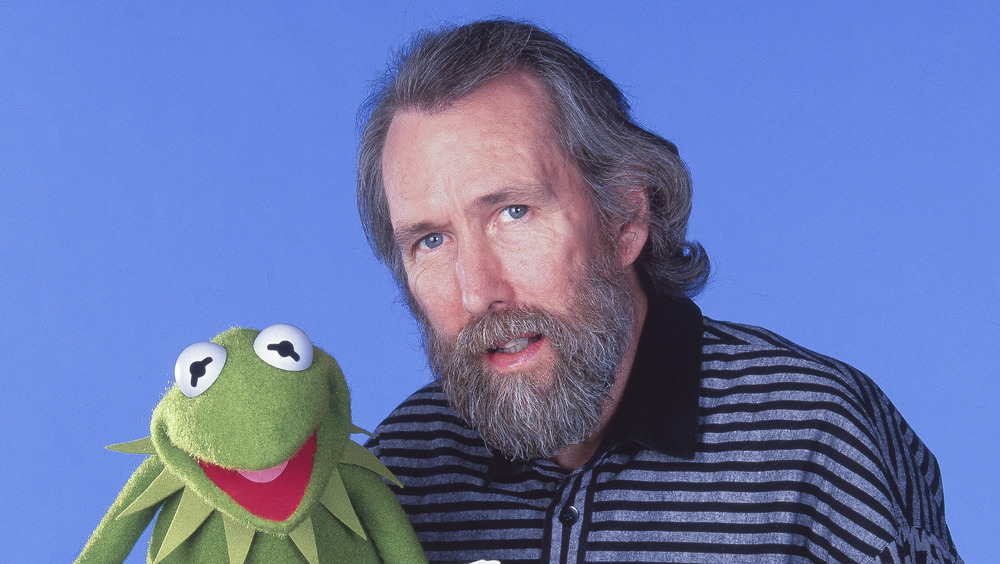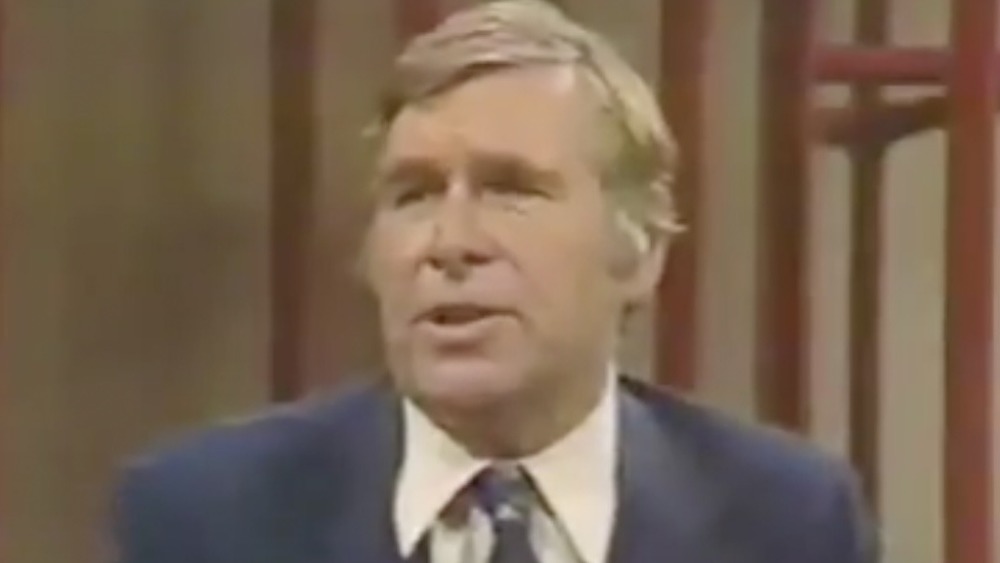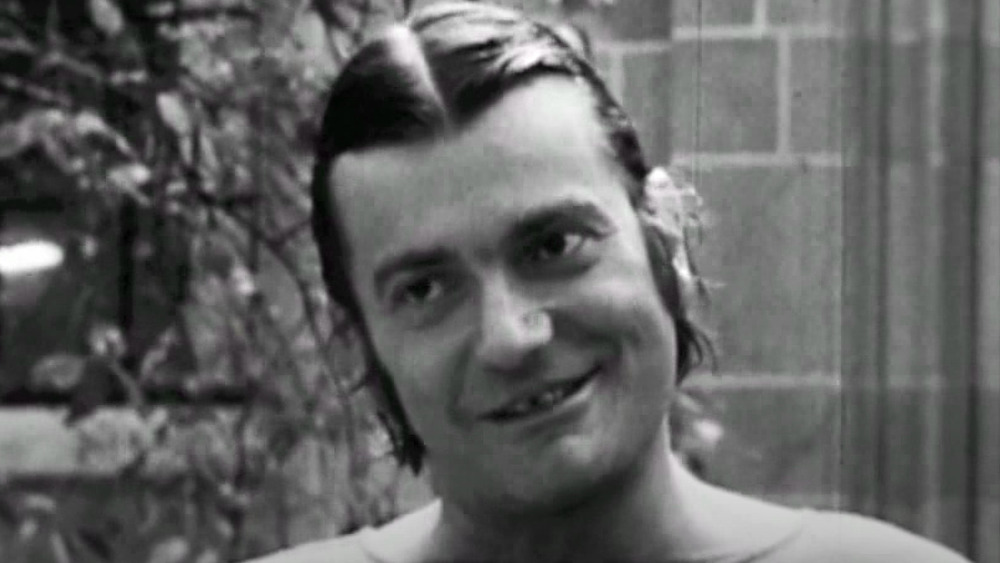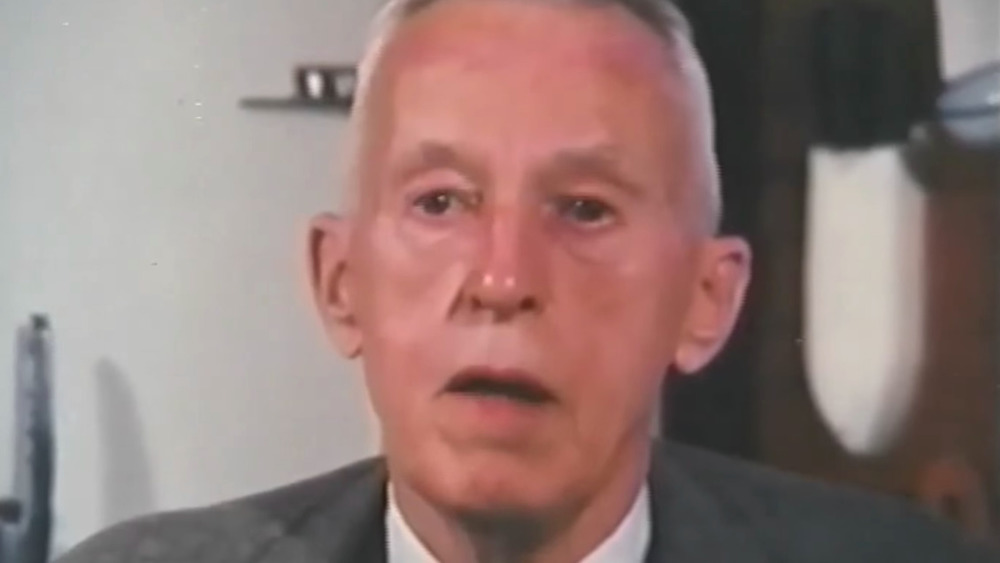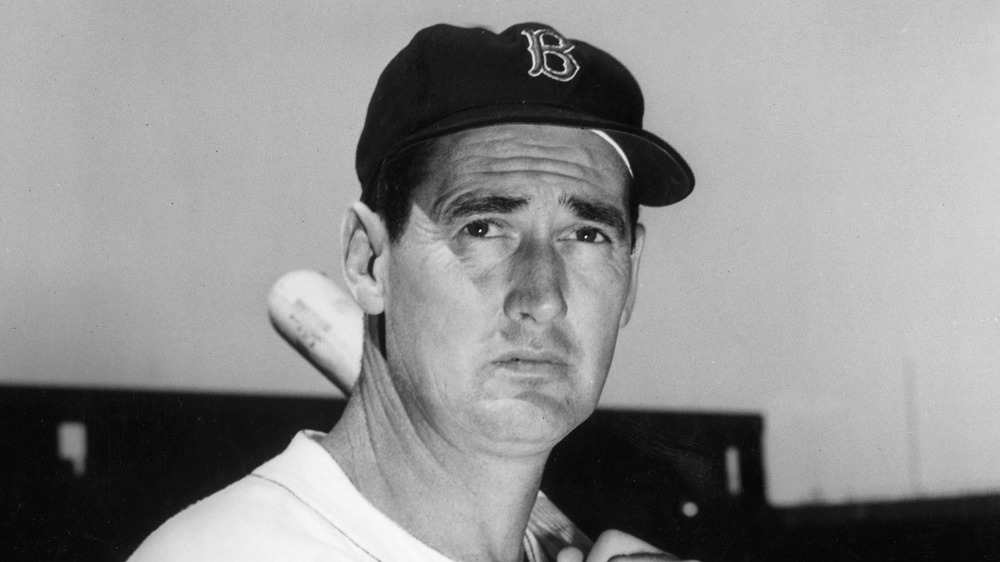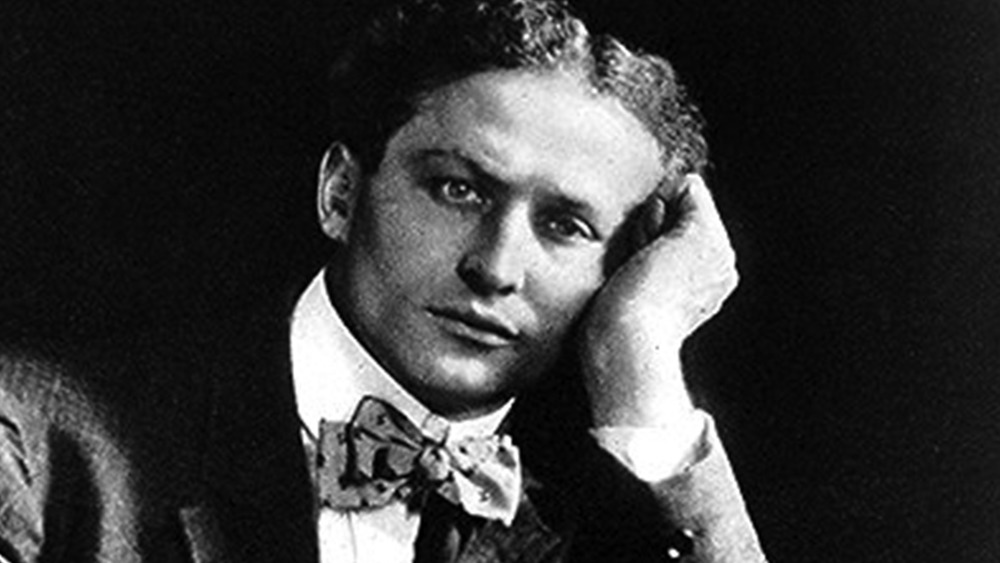These Celebs Caused A Stir With Their Final Dying Wish
Death comes for us all, of course, and everyone approaches this potentially complicated time differently. Some people don't want to make a fuss and pass quietly, while others might be all about self-reflection or shedding that mortal coil with some wise words of wisdom still hanging in the air. Despite a life well-lived, one full of significant achievements, both professional and personal — or maybe because of it — many people can't resist one grand final gesture. They want to go out in style or ensure that they won't soon be forgotten.
In leaving behind a legacy, some quirky celebrities (via will or deathbed request to family and friends), file one last wish. These can be weird, expensive, hilarious, and heartbreaking — although some of those final wants are harder to accommodate than others. Here are some famous people whose last, big wish was granted — never mind the tremendous effort their loved ones had to put in to make them happen.
2Pac wanted his friends to smoke him
Tupac Shakur, or 2Pac when performing, was among the most popular and influential rappers of the 1990s, his throaty voice and powerful, clever lyrics propelling songs like "Dear Mama," "Keep Ya Head Up," and "California Love" to the top of the charts. Shakur died unexpectedly and violently, succumbing to injuries suffered after a drive-by shooting in Las Vegas in September 1996, according to The New York Times. He was only 25 years old and probably hadn't given much thought toward his final resting place. He didn't sign any official, legal document, but like so much of Shakur's life, his notion of how his remains should be handled was expressed bluntly in the lyrics of a song.
About a year before he died, Shakur formed the hip-hop collective Outlawz, with whom he recorded the song "Black Jesuz," which wasn't officially released until three years after the rapper's death. The track includes the lyric, "Last wishes, n***** smoke my ashes." Over a decade later, Outlawz member E.D.I. Mean told VLADTV that the idea came as a "conversation that [they] had prior to even doing that song." The Outlawz, along with some members of Shakur's family, had a small memorial on a beach. They ceremonially burned things the rapper enjoyed, including chicken wings and orange soda. Then they mixed in the remains of that stuff with the previously cremated remains of Shakur (and some marijuana) and smoked it.
Elizabeth Taylor was late to her funeral
Elizabeth Taylor was known for three things: her terrific dramatic acting skills (she won two Oscars on five nominations), getting married a lot (eight times to seven men, per ABC News), and for being a living, breathing, and near-final vestige of Hollywood's glamorous mid-20th century golden age. Well into her semi-retirement in the 1990s and beyond, when her every move and love life development was breathlessly and endlessly covered by gossip magazines, Taylor rarely appeared in public not dressed to the nines in a fancy gown, adorned in diamonds with her hair done up. The violet-eyed national treasure ensured that her final act on Earth, post-last breath but before burial, would be suitably fashionable and charmingly self-aggrandizing — diva or movie star behavior, in other words.
Taylor died in March 2011 at age 79 of heart failure, according to The Guardian. Her funeral was held one day later in Southern California, and many celebrity well-wishers arrived well in advance of the announced 2 p.m. start time. The service didn't actually begin until 2:15, however. According to CBS News, Taylor left instructions that expressly stated that the funeral begins 15 minutes late. The reason: She "wanted to be late for her own funeral."
Marilyn Monroe bequeathed her possessions to someone who didn't really want them
There aren't many celebrities that captured the collective attention quite like how Marilyn Monroe did. Monroe became Hollywood's definitive blonde bombshell and biggest sex symbol with showy roles in 1950s movies like Gentlemen Prefer Blondes, How to Marry a Millionaire, The Seven-Year Itch, and Some Like It Hot. Reported details of Monroe's personal life were just as eagerly devoured by the public, particularly her tumultuous marriages to baseball star Joe DiMaggio and Pulitzer Prize-winning playwright Arthur Miller.
Monroe's period at the top of the world was relatively short-lived. According to History, her body was found in her Los Angeles home on August 5, 1962. A Los Angeles Police investigation ruled that the movie star's death at age 36 was "a self-administered overdose of sedative drugs and that the mode of death is probable suicide." According to Vanity Fair, Monroe had written up a will, however, requesting that all of her personal effects become the property of influential performance coach Lee Strasberg, director of the Actors Studio and Monroe's personal mentor. Those various items sat mostly untouched in storage for years, and after Strasberg died in 1982, they became the property of his third wife, Anna Mizrahi Strasberg, who began auctioning off Monroe's things in 1999.
Leona Helmsley left everything to her dog
Very few hoteliers become celebrities, but then there weren't many hoteliers like Leona Helmsley. By the 1980s, Helmsley co-owned several of New York's most palatial hotels, including the Palace Hotel, the Park Lane, and the New York Helmsley, as well as the Empire State Building. according to CNN. That made Helmsley extraordinarily rich, but that portfolio was severely threatened in 1989 when she tried for tax evasion. During the media hubbub that resulted, employees came forward to reveal horrendous treatment from Helmsley, while an ex-housekeeper at one of her hotels claimed the tycoon once said, "We don't pay taxes. Only the little people pay taxes." After serving several years behind bars, Helmsley shifted to a lower profile and gave millions to charitable causes.
When Helmsley died at age 87 in 2007, she still had a sizable fortune. According to Slate, she left $10 million each to two grandkids, none to her two other grandchildren, and a whopping $12 million to ensure the continued care of her dog, Trouble. In the aftermath of the bequeathment, per The New York Times, Trouble received more than 20 kidnapping and death threats. When Helsmley's brother refused to take in Trouble, the dog was whisked via private jet to Florida, where she was cared for by the manager of one of Helmsley's hotels.
Dusty Springfield left everything to her cat
Dusty Springfield was gifted with one of the sweetest, smoothest, and most soulful voices in pop music history, a gift she shared with the world on big and bold singles that performed well in both her native UK and the US in the 1960s, including "I Only Want to Be With You," "You Don't Have to Say You Love Me," "The Look of Love," and "Son of a Preacher Man." She rarely recorded after the early '80s but made a nice comeback as a guest on the Pet Shop Boys hit "What Have I Done to Deserve This?" According to The Journal Times, Springfield was diagnosed with cancer in 1994 and died in March 1999 at age 59.
The pop legend never married and didn't have any children, and she left her estate largely to a 13-year-old named Nicholas — her cat. According to the New York Post, Springfield's will left resources and directions for the proper care of Nicholas. The cat was to be fed American-made baby food (exported to England), provided a seven-foot-tall indoor treehouse, sleep on a bed covered with the nightgown Springfield had on when she died, be "married" to a cat belonging to a friend of his deceased owner, and "be serenaded to sleep each night by a stereo system playing his master's greatest pop hits."
Jim Henson planned his own funeral
Jim Henson was a towering figure of 20th-century arts and entertainment. As the creator and chief creative mind behind the Muppets, he made cultural icons out of expressive and hilarious puppets like Kermit the Frog, Rowlf the piano-playing dog, and made classic TV in the form of Sesame Street and The Muppet Show.
In May 1990, according to the Orlando Sentinel, Henson checked into New York Hospital-Cornell Medical Center feeling extremely sick. Less than 24 hours later, the 53-year-old entertainer was dead from a quickly spreading case of toxic shock syndrome (via The New York Times) brought on by bacterial pneumonia. According to Brian Jay Jones' Jim Henson: The Biography, shortly after his passing, Henson's children received, via their father's lawyers, a letter the Muppet master wrote in 1986, laying out his funeral ideas. "I suggest you first have a nice, friendly little service of some kind," he wrote, "hopefully using the talents of some of the good people who have worked with me over the years." He asked for Muppet collaborator Richard Hunt to speak, for a few "happy and joyful" songs to be performed, and that a Dixieland jazz band close it out with a "rousing version" of "When the Saints Go Marching In."
Mere days later, Henson's Muppets staged a memorial service that closely adhered to Henson's just-delivered wishes. Richard Hunt delivered a powerful eulogy, many songs were performed, gathered mourners operated butterfly puppets, and The Dirty Dozen Brass Band played "When the Saints Go Marching In."
Space is the place for the creator of Gene Roddenberry
As the creator of the Star Trek franchise — specifically, the 1966-69 Star Trek original series and the 1987-94 Star Trek: The Next Generation — Gene Roddenberry was extremely influential on the popularization and development of American science-fiction. His space-set stories were often allegorical tales about the human condition but always crackled with optimism about what the future controlled. As the opening credits of Star Trek famously intoned, Roddenberry looked forward to mankind exploring "space, the final frontier" and "to boldly go where no man has gone before."
Understandably, Roddenberry wanted his final resting place to be space. He died in 1991, and his remains were cremated, according to Heroes and Villains. Getting them into the cosmos proved difficult. In April 1997, along with the ashes of other celebrities who'd paid for the privilege, a portion of Roddenberry's ashes were loaded onto the Pegasus-XL rocket, which shot them into Earths' orbit. More of Roddenberry's ashes were scheduled to hit space on another memorial spaceflight in 2014, along with the ashes of Star Trek actor James Doohan (Scotty).
A theater legend wanted his skull to appear in Hamlet
The name "Del Close" might not be familiar, but his legacy and influence on comedy are tremendous. According to the Independent, he was influential in the style and evolution of several live comedy theaters like Second City and ImprovOlympic, training grounds for masters like Bill Murray, Mike Myers, Chris Farley, John Belushi, and Amy Poehler.
Close appreciated anarchy, mischief, and darkness in comedy, and his last will and testament included a wish along those lines. According to the Chicago Tribune, Close died at age 64 in March 1999, and four months later, his professional partner Charna Halpern conducted a public ceremony at ImprovOlympic, as laid out in Close's will. The mentor's real and preserved skull was set out on a velvet pillow and officially bequeathed to Chicago's Goodman Theatre. That organization can use it as a prop in any production it likes, although Close's first preference is that it's someday used in a production of William Shakespeare's Hamlet, as Yorick, the skull of an old friend that the title character holds up while reflecting in a graveyard. "He's also willing to be a skull in a desert scene," Halpern said. "He's not picky, he just wants the work."
The founder of Alcoholics Anonymous had a final and controversial request
Known in his lifetime as Bill W., Bill Wilson founded Alcoholics Anonymous in the 1930s, establishing a 12-step program to help himself — and an estimated two million people — to break a devastating addiction to alcohol. Wilson's organization would argue that alcoholics are never fully healed from addiction, as it calls sobriety obtained through the program "recovery," and that former substance users are forever in that state. Wilson himself struggled with cravings for alcohol for his entire life, after decades of recovery. When he died at age 75 in January 1971, according to The New York Times, he hadn't had a drink in more than 35 years.
During the last weeks of his life, bed-bound due to the effects of emphysema, hospital logs that biographer Susan Cheever shared with The Washington Post in 2004 stated that on Christmas Day 1970, Wilson "asked for three shots of whiskey." His nurse denied the request, which reportedly upset Wilson. The AA founder kept asking for whiskey, on January 2, January 8, and January 14. He died less than two weeks later, never getting that final drink. "I realized that this was a story about the power of alcohol: that even Bill Wilson, the man who invented sobriety, who had 30-plus years sober, still wanted a drink," Cheever said.
Ted Williams was split in two and frozen
Ted Williams was an undeniably great baseball player. Suiting up for the Boston Red Sox for every year of his 19 season career (interrupted by a three-year stint fighting in World War II), Williams was a 19-time All-Star, two-time American League MVP, a Baseball Hall of Famer, and the last man to hit .400 in a single season.
How Williams wanted his corporeal remains handled was a murky and confusing legal situation. According to CBS News, Bobby-Jo Williams Ferrell, the baseball great's oldest daughter, attested that Williams had placed in his will a request to be cremated with his ashes dispersed into the ocean off a Florida beach. Be that as it may, Williams — along with his other two children, John Henry Williams and Claudia Williams — signed a document three years after that will, expressing the desire to be placed in biostasis upon death. Biostasis is another word for cryogenic freezing, a cutting-edge scientific procedure in which the body is frozen in chemicals in the hope that it can one day be revived.
And that's what became of Ted Williams' body. Right after he died in July 2002, his corpse was whisked to the Arizona headquarters of cryonics firm Alcor Life Extension Foundation, where his head was separated from his body and then preserved in steel containers filled with liquid nitrogen.
Harry Houdini made his associates try to contact him in the great beyond
In the early 20th century, Harry Houdini was one of the most popular entertainers in America. His vaudeville act featured illusions, magic tricks, and death-defying stunts that baffled audiences. According to Biography, Houdini would be handcuffed or contained to a straightjacket and then locked inside tanks full of water or other confined spaces, and he'd somehow find his way out, seemingly barely cheating death each time. (His secret: He was an expert at both lock-picking and hiding lock-picking gear on his person.)
As the most prominent magician of his era, Houdini tried to expose phony psychics and call out performers who claimed to have a link with the supernatural, and yet he and his wife, Bess, developed a keen interest in "spiritualism," the 1900s term for attempting to communicate with the dead. The couple had a pact: Whoever died first would attempt to communicate with the surviving spouse from beyond the great beyond.
It came to pass that Harry Houdini died first, on Halloween 1926. And so, on the subsequent anniversaries of her husband's death, according to Mental Floss, Bess Houdini held annual seances, hoping to connect with her deceased life mate. They even worked out a special code: "Rosabelle- answer- tell-pray, answer- look- tell- answer, answer- tell." After a tenth failed seance in 1936, Bess Houdini gave it up. "Ten years is long enough to wait for any man," she quipped, according to the New York Times.

